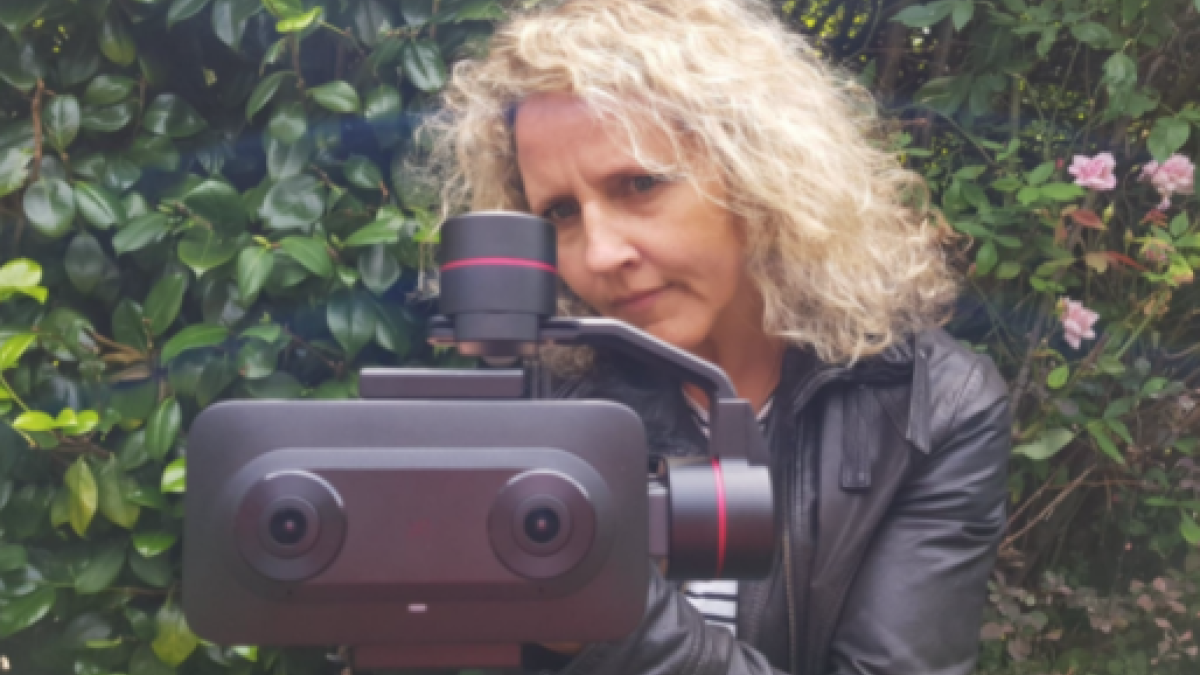Award-winning director Mary Matheson joins ASU in new LA-based program

Mary Matheson mixes the latest technology — mobile, augmented and virtual reality — along with intimate documentary techniques to bring the audience into the heart of the narrative.
Mary Matheson, an award-winning British director, is joining Arizona State University as professor of practice in the new program for Narrative and Emerging Media in Los Angeles.
Matheson is known for her innovative work directing character-driven films for social impact, both through documentary filmmaking and immersive media.
“When I was growing up I traveled a lot around the world, and I was always trying to make connections between communities,” Matheson said. “I wanted to tell stories that we weren’t necessarily hearing in the mainstream media.”
Matheson’s appointment is in both The Sidney Poitier New American Film School, in the Herberger Institute for Design and the Arts, and the Walter Cronkite School of Journalism and Mass Communication; the LA-based Narrative and Emerging Media program will be a collaborative effort between the two. Matheson will be working closely with Nonny de la Peña, the director of the program.
"I am thrilled and excited to have an opportunity to work with Mary as she and Nonny educate all of us on the exciting opportunities available in emerging media,” said Cheryl Boone Isaacs, founding director of The Sidney Poitier New American Film School.
Matheson mixes the latest technology — mobile, augmented and virtual reality — along with intimate documentary techniques to bring the audience into the heart of the narrative.
She kicked off her immersive work with “Mamie’s Dream,” a 360-degree film (video recordings where a view in every direction is recorded at the same time) about female genital mutilation in Sierra Leone, and followed this with the five-part 360 documentary series “The Female Planet” for Google. She was lead director on the 10-part 360 series “New Realities,” featuring young female activists throughout the world, supported by Ava DuVernay’s Array Now and featured on the Oculus platform.
“Right now we can sense, those of us that are working in (the immersive media field), that we’re on the precipice of something much bigger,” Matheson said. “I bring theater-making, gaming and art into my work. It’s a form that is sort of blurring the lines between these genres that used to be separate. I’ve started to use game-engine technology to create these worlds that audiences can explore, and there’s much more interactivity. ... You start to feel as an audience member that you somehow have control or agency in molding how the story pans out. And I think that can be a very valuable form, even just for fun.”
More Law, journalism and politics
Can elections results be counted quickly yet reliably?
Election results that are released as quickly as the public demands but are reliable enough to earn wide acceptance may not…
Spring break trip to Hawaiʻi provides insight into Indigenous law
A group of Arizona State University law students spent a week in Hawaiʻi for spring break. And while they did take in some of the…

LA journalists and officials gather to connect and salute fire coverage
Recognition of Los Angeles-area media coverage of the region’s January wildfires was the primary message as hundreds gathered at…

